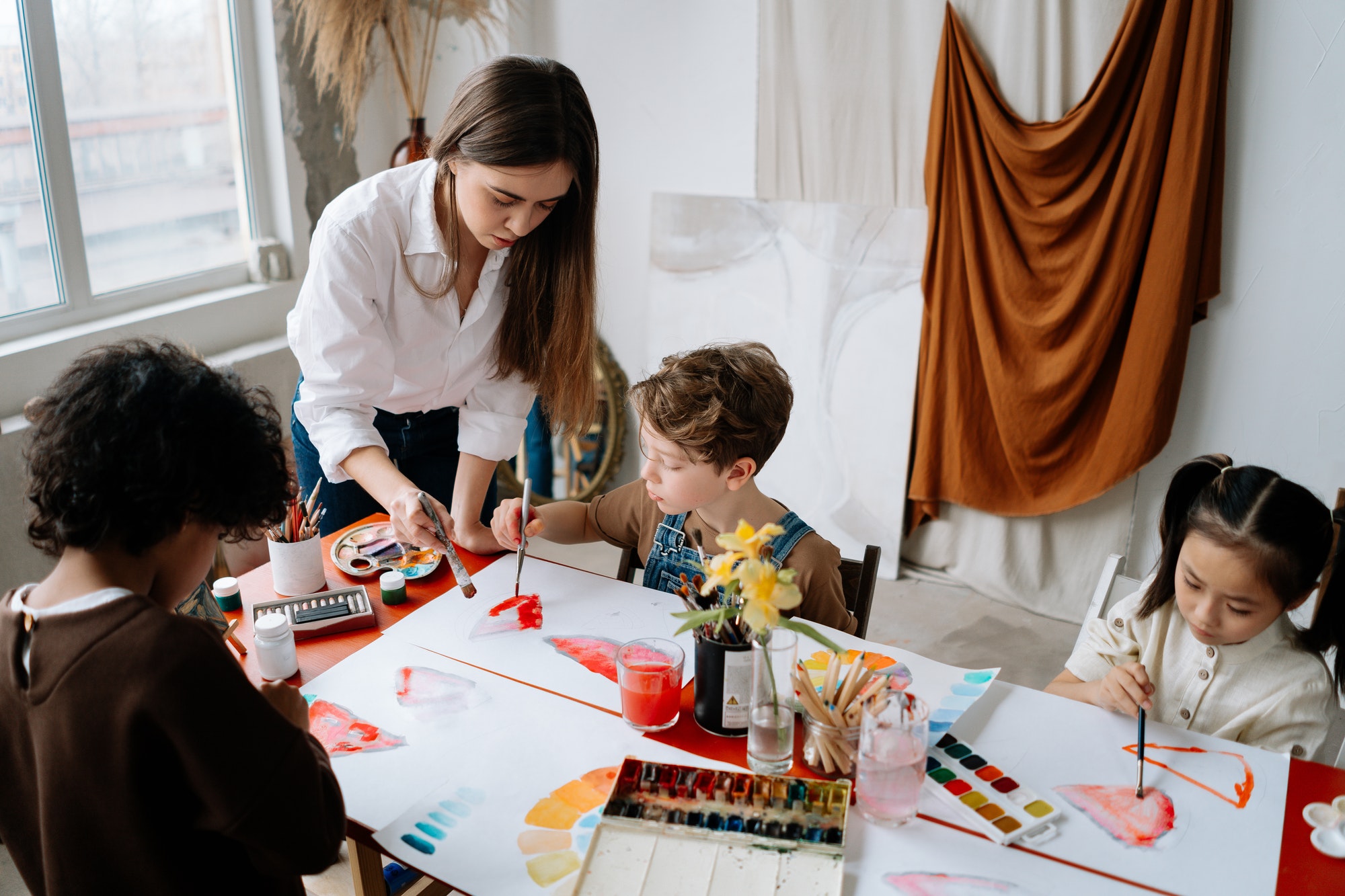f you’re a teacher working with younger kids, you’ll know they can be a handful. On good days, there can be nothing more gratifying than teaching children. Each day can bring something exciting and new, and you can learn as much from them as they do from you. Moreover, the feeling of making a difference in these children’s lives and helping them get to that ‘aha!’ moment is always priceless.
However, not every day is as exciting, and if you aren’t prepared, you can have a tough time getting through young minds. In many ways, working with children can be tougher than teaching older students. If you don’t have a clear idea of some do’s and don’ts, you’ll end up pulling your hair at the end of the class. So, if you’re looking to improve your teaching strategies, we have some tips for you. Keep reading below for the most important things to consider when teaching children.
Create a positive learning environment
One of the most vital aspects to focus on when teaching children is creating a positive learning environment. Although students of all ages can benefit from it, this is more important for younger students as it can enhance their learning experience as they grow older. It can also help make your lessons much more memorable and interactive. To create a positive learning environment, focus on student participation and building rapport for better learning.
Creating a positive learning environment isn’t as easy as it may sound. But specialized training can help you understand this teaching method best and help you utilize it to your advantage. With a specialized master’s in childhood education, you can be better equipped to understand the behavior and emotions of children and create a learning environment accordingly. A Master’s degree in Early Childhood Education can thus help you have a strong impact on your students and help them learn effectively.

Be playful and dynamic
If you ask students who their ideal teacher would be, they’d always pick someone fun, engaging, and energetic. In an attempt to enforce discipline and teach effectively, most teachers end up being too stoic, boring, and intimidating. When in the classroom, these teachers will stick strictly to the material, not engage with the students, and inadvertently stifle creativity and self-expression.
Especially when working with younger children, you must be as dynamic and natural as possible. Teaching in a fun way and putting your spin on things will make even the dullest of subjects more fun. Additionally, loosening up can make it easier for you to enjoy your job and help your students enjoy what they’re learning too. If you want to incorporate more fun, consider bringing in props to help your children learn better. The more engaged they are in class, the more likely they will remember concepts and assimilate knowledge.
Adjust yourself to each student’s needs
As a teacher, your job isn’t just to employ a one-size-fits-all teaching method and apply it to the entire class. Instead, you must engage with and understand each student individually. If you fail to understand your student’s unique needs and abilities, you will fail to get through to them. Moreover, it can be much harder to connect with them by using a one-size-fits-all approach.
Some students can be easier to handle, but others may have a trickier temperament. Some children can be disruptive but require comfort to calm down, whereas others need more discipline. Some can be ready to move into the next lesson immediately, but others might need a break to recharge. Other students may be easily distracted and need consistent check-ups to keep them engaged. As a teacher, you’ll need to identify these different temperaments early on and figure out the best way to deal with each child. Once you do, you can have a much easier journey with them.

Connect to your students
Empathy is easily one of your most vital traits as a teacher. Without being empathetic, you can find it challenging to form a meaningful connection with your students. Without this connection, it can be challenging for them to learn anything. Developing a connection is most important when you’re dealing with tough kids. More often than not, these kids come from difficult backgrounds where they may have experienced a lot of trauma at a young age.
You don’t have to ask your students to share what may be bothering them, but you can show an interest in their lives. You can start by noticing what they’re like and take the conversation from there. With time, your students will trust you and open up, which can give you valuable insight into their lives and how circumstances affect their learning. Moreover, as you learn more about your students, you can also get the chance to connect with their parents. This can give you a chance to address issues students might be experiencing and advise parents on how they can help their kids.
Offer a lot of feedback
Feedback is an excellent way to keep your students engaged. Students often feel there’s no point in putting in hard work because the teacher offers little or no feedback. This can affect the quality of their work and keep them from learning how and where they can improve.
Whether you’re grading assignments, presentations, or anything else, be sure to offer timely and detailed reviews. If you feel that the student has major gaps in understanding, ask them to come in so you can explain things to them better. Moreover, if you encounter good quality work, be sure to praise the student. Be it golden stars or recognition in front of the class, ensure your students know hard work can be extremely rewarding.

Conclusion
As a teacher, you’ll have your work cut out for you. Children can, at times, be a tricky bunch, but working with them can also be an incredibly rewarding job if you do it right. You can help your students learn better and develop a lifelong thirst for knowledge with these tips. These tips can also help you connect with your students deeper and create a warm, trusting relationship.
